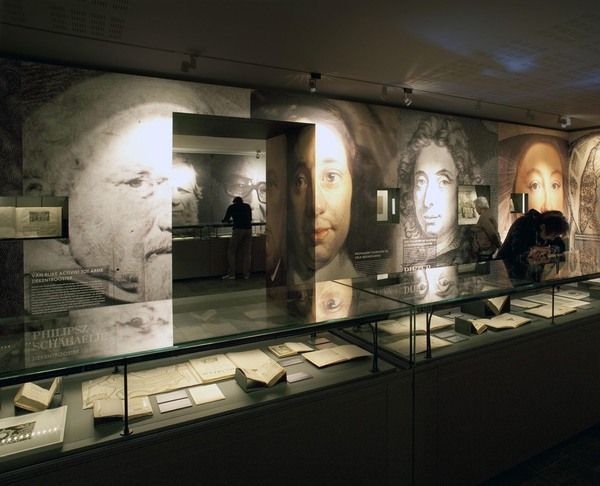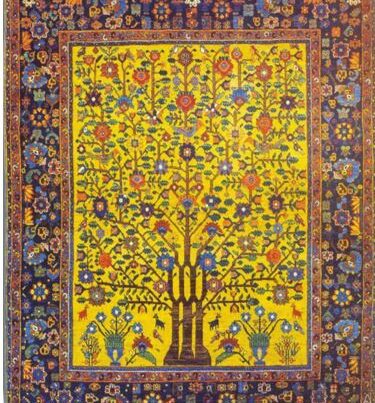In the Middle of the Museum:
Display I – V
SUSANNE WEISS
Co-Editor
Published in 2A Magazine Issue #13 – Spring 2010
The circle of coins in the collage “Expedition” by Sophie-Therese Trenka-Dalton shows the full set of Iraqi Dinar coins until the fall of Saddam Hussein 2003. Since then these are out of circulation: Displacing an object somewhere and displaying it elsewhere has a long tradition since the Age of Enlightenment.
After returning home from a long exciting journey to exotic, new and untouched regions, the unknown and the undiscovered was finding its place in little chambers of valuable collections. Later these cabinets of curiosities turned into temples of display and displace. These temples were called “public” museums, although access was another journey.
One could say that nowadays this situation has changed dramatically. Museums are open to the general public and address a broad audience. Nevertheless many museums are still visited by a small audience. The history of the museum is not straight, nor the path of an object. Why are these paths hardly drawn in the context of the museum? How come that an object is (dis)placed in a display, transmitting less than what it is? These days’ museums have developed various forms for filling this gap (like information text, guides, audio guides, live-speakers, meet the curator, etc.). In order to distribute the content of the museum one has to turn the three-dimensional into the two-dimensional – thus another path of interpretation is made that allows the objects to ‘travel’.
The relationship of travelling, displaying and displacing plays an important role in the work of the artists Rose Frain, Tarek Al Ghoussein, Katrin Greiling, Sophia Pompéry and Sophie-Therese Trenka-Dalton. They do as museums do – they interpret history through their looking glass. I invited them for the current issue to display and displace parts of complex series of their work into the two-dimensional: Display I, II, III, IV and V.
Sophie Therese Trenka-Dalton collaged a new series entitled “Expedition”. Her title describes the centrefold of her body of work, her examination of the appropriation of culture, in particular the movement of Assyrian and Mesopotamian heritage and the places this process generates. Starting out at major museums like the British Museum, Pergamon Museum and Louvre her projects follow the placement of archaeological fragments through themed architecture, film sets and shopping centres. Her recent project on Dubai that is still in progress, takes a reversed look, focusing on looking at ‘Western’ iconography within a selection of Dubai’s building projects. Her black and white photo piece of a British WWI military compass leads us to the beginning of the age of museums.
Taking the history of the museum as a starting point the city of Alexandria has to come into our mind. Alexandria, the intellectual centre of civilisation attracted both Rose Frain and Sophia Pompéry. They developed new works while being artists in residence in Alexandria. ‘This Time in History’ is Rose Frain’s long-term project, dealing with critical moments including in Egypt’s history; the challenges of daily subsistence in present day and its ancient history. The city of Alexandria is signalled through the filter of its historically significant structures: the Lighthouse, the Library, and the Museum. Her installation includes paintings, an artist’s book and found, altered and made objects. As she describes the museum through her work: A cabinet of disconcerting, intriguing objects, triggering associations of ‹what escapes›.
Shifting places encompasses preconceptions. Tradition and related objects is the point of departure for Sophia Pompéry’s video work “Kawala Play”. Whilst looking for traditional tearooms in Egypt, she discovered a traditional music instrument, the kawala. Her unusual usage of this instrument enables her to reflect her own perception. Instead of trying to play this instrument she treats it as a historical traditional object and reinterprets it. By creating a bubble, she mirrors herself and her environment. As the bubble grows, its iridescent membrane becomes increasingly lighter and more transparent until the sound stops and the bubble bursts.
Looking at places where the bubbles did not burst yet is one of Katrin Greiling’s techniques. In her work she combines the local with her Nordic minimal tradition. Her interest in the cultural traditions of the Region leads her every year to Liwa in the UAE, where the annual celebration of the camel takes place. At this time a certain idea and notion of a museum is evident.
Tarek Al Ghoussein is an artist who lives in the UAE for the last 15 years. In his conceptual approach he re-enacts his displacement and reveals images, which depict barriers, land and longing. His exploration of the abandoned and untouched land through himself as subject and object leads to images, which place the “missing” at the centre. Like in a museum, the vanished becomes the focal point.
Display I – V is a two-dimensional exhibition, set within the 2A Magazine, which offers with its current issue a look into the recent developments in the field of museology in the Middle East. Such artistic response demonstrates how thin the line is between the ephemeral and the written history.
I would like to thank the artists and all the authors who have contributed with their articles, efforts and visual material to the current discourse.




